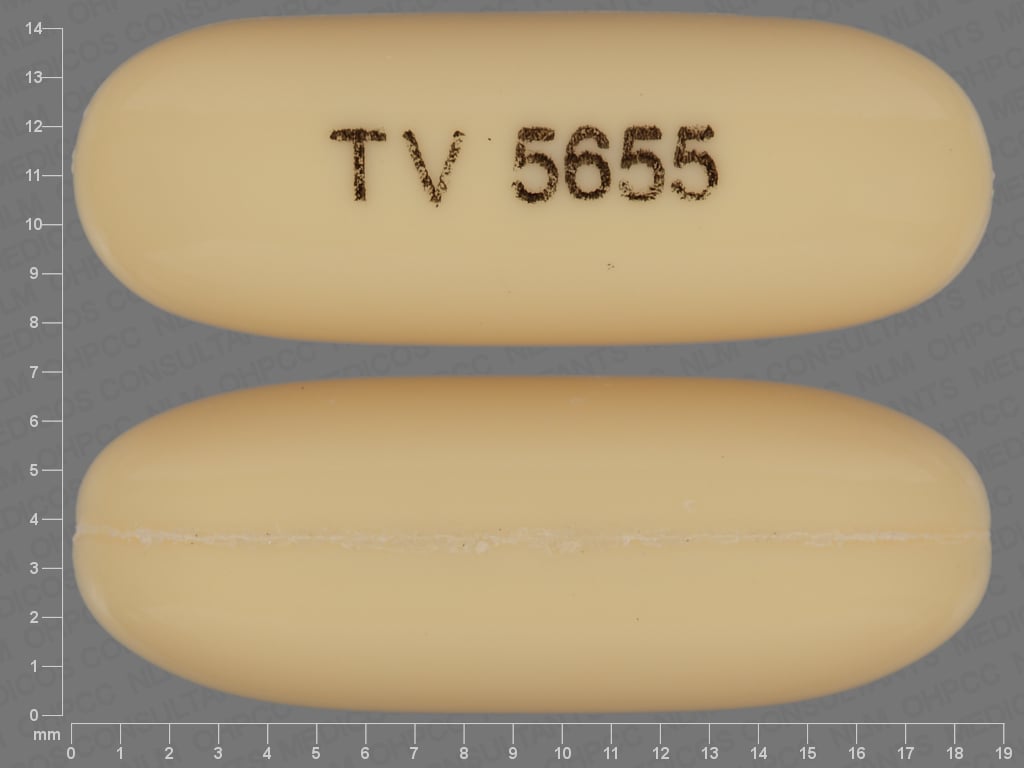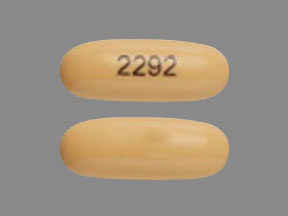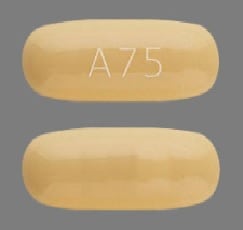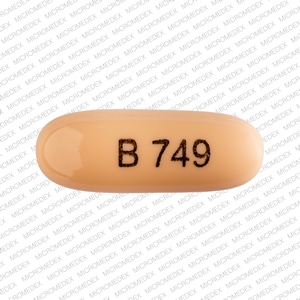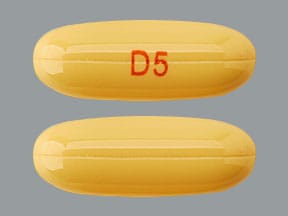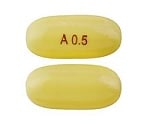Dosage Forms
Excipient information presented when available (limited, particularly for generics); consult specific product labeling.
Capsule, Oral:
Avodart: 0.5 mg
Generic: 0.5 mg
Pharmacology
Mechanism of Action
Dutasteride is a 4-azo analog of testosterone and is a competitive, selective inhibitor of both reproductive tissues (type 2) and skin and hepatic (type 1) 5α-reductase. This results in inhibition of the conversion of testosterone to dihydrotestosterone and markedly suppresses serum dihydrotestosterone levels.
Pharmacokinetics/Pharmacodynamics
Absorption
Absorbed via skin when handling capsules
Distribution
Vd: 300 to 500 L, ~12% of serum concentrations partitioned into semen
Metabolism
Hepatic via CYP3A4 and CYP3A5 isoenzymes (extensive); forms metabolites: 6-hydroxydutasteride has activity similar to parent compound, 4′-hydroxydutasteride and 1,2-dihydrodutasteride are much less potent than parent in vitro
Excretion
Feces (40% as metabolites, ~5% as unchanged drug); urine (<1% as unchanged drug); ~55% of dose unaccounted for
Time to Peak
2-3 hours
Half-Life Elimination
Terminal: ~5 weeks
Protein Binding
99% to albumin; ~97% to alpha1-acid glycoprotein; >96% to semen protein
Use in Specific Populations
Special Populations: Elderly
Dutasteride half-life increases with age.
Use: Labeled Indications
Benign prostatic hyperplasia: Treatment of symptomatic benign prostatic hyperplasia (BPH) as monotherapy (to improve symptoms, reduce the risk of acute urinary retention, and to reduce the risk of need for BPH-related surgery) or combination therapy with tamsulosin
Limitations of use: Not approved for the prevention of prostate cancer.
Use: Off Label
Male pattern baldnessb
Two randomized, placebo-controlled trials demonstrated efficacy of dutasteride in increased hair growth compared to placebo, with the most common side effect reported was decreased libido or sexual dysfunction Eun 2010, Olsen 2006. In one of the trials, dutasteride 2.5 mg demonstrated superiority to finasteride 5 mg at 12 and 24 weeks; however, androgen-related adverse effects may also occur more frequently with dutasteride due to its potency Olsen 2006. Additional trials may be necessary to further define the role of dutasteride in the treatment of this condition.
Contraindications
Clinically significant hypersensitivity to dutasteride, other 5-alpha-reductase inhibitors (eg, finasteride), or any component of the formulation; use in pediatric patients; women of childbearing potential; pregnancy
Dosage and Administration
Dosing: Adult
Benign prostatic hyperplasia (BPH): Males: Oral: 0.5 mg once daily alone or in combination with tamsulosin
Dosing: Geriatric
Refer to adult dosing.
Administration
May be administered without regard to meals. Capsule should be swallowed whole; do not chew or open; contact with opened capsule can cause oropharyngeal irritation. Should not be touched or handled by women who are pregnant or are of childbearing age.
Storage
Store at controlled room temperature of 25°C (77°F); excursions permitted to 15°C to 30°C (59°F to 86°F).
Dutasteride Images
Drug Interactions
CYP3A4 Inhibitors (Strong): May increase the serum concentration of Dutasteride. Monitor therapy
Test Interactions
PSA levels decrease in treated patients. After 3 months of therapy, PSA levels stabilize to a new baseline that is ~50% of pretreatment values. If following serial PSAs in a patient, re-establish a new baseline after ≥3 months of use. If interpreting an isolated PSA value in a patient treated for ≥3 months, then double the PSA value for comparison.
Adverse Reactions
Frequency of most adverse events (except prostate cancer high grade) tends to decrease with continued use (>6 months). Frequency not always defined.
1% to 10%:
Endocrine & metabolic: Decreased libido (≤3%; incidence highest during first 6 months of therapy), gynecomastia (including breast tenderness, breast enlargement; ≤1%), increased luteinizing hormone, increased testosterone level, increased thyroid stimulating hormone level
Genitourinary: Impotence (≤5%; incidence highest during first 6 months of therapy), ejaculatory disorder (≤2%)
Hematologic & oncologic: Prostate cancer high grade (≤1%)
<1%, postmarketing, and/or case reports: Angioedema, cardiac failure, depressed mood, dermatological reaction (serious), dizziness, hypersensitivity, localized edema, malignant neoplasm of breast (males), pruritus, skin rash, testicular pain, testicular swelling, urticaria
Warnings/Precautions
Disease-related concerns:
- Diminished urinary flow: Carefully monitor patients with a large residual urinary volume or severely diminished urinary flow for obstructive uropathy; these patients may not be candidates for dutasteride therapy.
- Hepatic impairment: Use with caution in patients with hepatic impairment.
- Prostate cancer: When compared to placebo, 5-alpha-reductase inhibitors (5-ARIs) have been shown to reduce the overall incidence of prostate cancer, although an increase in the incidence of high-grade prostate cancers has been observed; 5-ARIs are not approved in the US or Canada for the prevention of prostate cancer.
Concurrent drug therapy issues:
- CYP3A4 inhibitors: Use with caution with concurrent use of potent, chronic CYP3A4 inhibitors.
Special handling:
- Women/pregnancy: Active ingredient can be absorbed through the skin; women should always use caution whenever handling. Pregnant women or women trying to conceive should not handle the product; if contact with a leaking capsule occurs, wash area immediately with soap and water; dutasteride may negatively impact fetal development.
Other warnings/precautions:
- Appropriate use: Other urological diseases, including prostate cancer, should be ruled out before initiating therapy.
- Blood donation: Avoid donating blood during or for 6 months following treatment cessation due to risk of administration to a pregnant female transfusion recipient.
- PSA monitoring: Reduces prostate specific antigen (PSA) by ~50% within 3-6 months of use. If following serial PSAs, re-establish a new baseline ≥3 months after treatment initiation; monitor PSA periodically thereafter. If interpreting an isolated PSA value in a patient treated for ≥3 months, then double the PSA value for comparison to a normal PSA value in an untreated man. PSA increases while on dutasteride should be considered suspicious; obtain serial PSA measurements and evaluate (Andriole, 2006). Patients on a 5-ARI with any increase in PSA levels, even if within normal limits, should be evaluated; may indicate presence of prostate cancer.
Monitoring Parameters
Objective and subjective signs of relief of benign prostatic hyperplasia, including improvement in urinary flow, reduction in symptoms of urgency, and relief of difficulty in micturition; for serial PSA monitoring, establish a new baseline PSA level after 3 months of therapy and monitor PSA periodically thereafter.
Pregnancy
Pregnancy Risk Factor
X
Pregnancy Considerations
Abnormalities of external male genitalia were reported in animal reproduction studies. Use is not indicated in women. Pregnant women are advised to avoid contact with crushed or broken tablets and the semen from a male partner exposed to dutasteride.
Patient Education
What is this drug used for?
- In men, it is used to treat the signs of an enlarged prostate.
- It may be given to you for other reasons. Talk with the doctor.
Frequently reported side effects of this drug
- Dizziness
- Sexual dysfunction
- Decreased sex drive
Other side effects of this drug: Talk with your doctor right away if you have any of these signs of:
- Lump in breast
- Breast pain or soreness
- Nipple discharge
- Enlarged breasts
- Depression
- Signs of a significant reaction like wheezing; chest tightness; fever; itching; bad cough; blue skin color; seizures; or swelling of face, lips, tongue, or throat.
Note: This is not a comprehensive list of all side effects. Talk to your doctor if you have questions.
Consumer Information Use and Disclaimer: This information should not be used to decide whether or not to take this medicine or any other medicine. Only the healthcare provider has the knowledge and training to decide which medicines are right for a specific patient. This information does not endorse any medicine as safe, effective, or approved for treating any patient or health condition. This is only a brief summary of general information about this medicine. It does NOT include all information about the possible uses, directions, warnings, precautions, interactions, adverse effects, or risks that may apply to this medicine. This information is not specific medical advice and does not replace information you receive from the healthcare provider. You must talk with the healthcare provider for complete information about the risks and benefits of using this medicine.
